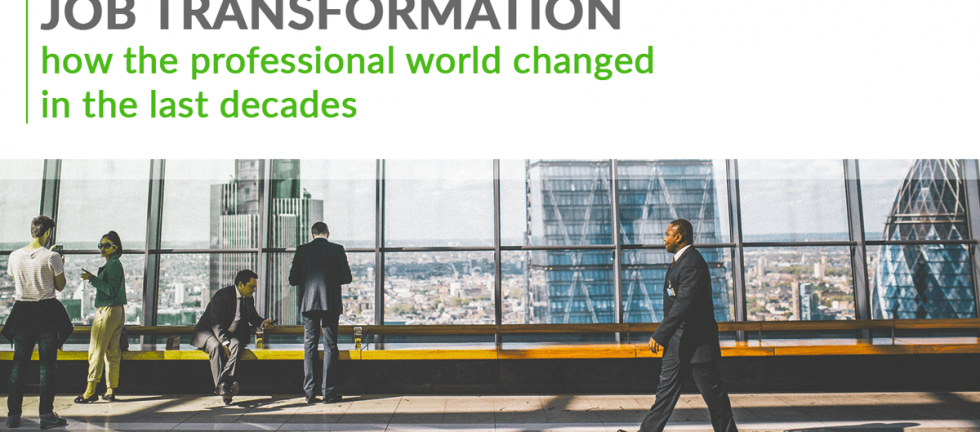Written by Lucia Manetti
Just 50 years ago the professional world was completely different. It has been changing a little bit everyday: for example, how did we get from the hierarchic vision to the team-centered structure?
It has been a long journey, since the era of the “steady job” to a new one, where people are able to move faster and to switch job with ease.
We can see the changes in many factors. Here is our list:
1. Wages
In the 70’s, people expected that one day, in 2019, the wages would’ve been much higher. But this didn’t happen at all, because of several factors, starting with the economic crisis of the last years, the inflation and the consequent lowering of the purchasing power. According to the Pew Research Center, even if the wages have increased in the last 10 years, the purchasing power decreased of the 6.9%
2. Dress-code
In the past, it was extremely common to have a dress-code in the company, like neckties for men and tailleurs for women. Perhaps today you cannot wear thongs, or short dresses, but in general the workplace has become less formal. Casual shirts and jeans are more than acceptable: they became the rule.
3. Technology
Technology brought us in a present that we couldn’t imagine. The internet has definitely changed the game, like tablets and smartphones, when just 20 years ago we had the first mobile phones. Today, we are able to bring with us the office just going in a bar or to the park, using a public wi-fi.
As for much of American history, everything changed slowly, in just a few years employees started having much less time to learn new software and platforms. They also require retraining and periodically updates.
Large tech companies drive the change, replacing traditional assets like overhead and slide presentations with smarter solutions, like Google Slides and Prezi. Moreover, in some cases job automation is catching on, but in contrast to the past, its influence stimulates entrepreneurship and increases competition.
Picture from Thumbtack
4. Telecommuting
The effectiveness and low cost of telecommuting employees now allows companies to hire off-site collaborators and many administrative personnel and white-collar professionals to work from home. In more recent years, a cultural shift in the general attitude has taken place, that has more workers looking for a better work/life balance that includes save the time to go to the office everyday.
Plus, thanks to telecommunication, companies are now able to hire people from any part of the world.
5. The job system
The power of the web have been important consequences in the job system. A lot of new jobs are based on web activities, like copywriters, web designers, web marketers etc…
All marketing professionals must have social media skills, as staying updated on new technology is critical in job system today. Offering help to elder co-workers it’s always a good idea, as past generations might still have trouble with digital resources.
6. Contracts
While in the past the concept of competition applied just within different companies, now it applies also for workers. Due to the high offer, employees have been brought to an open competition at the expense of their spare time and life quality.
7. Legalities
Workforce diversity and culture changing brought about new laws against harassment and inappropriate behaviour like jokes and insensitive remarks at the workplace. This phenomenon started with the market leaders, then it touched all the companies so that even in the smallest ones we now have company manuals with harassment and grievance guidelines available.
How about the future?
Forbes announces three working worlds on the same stage:
- A small one (the orange world), made of spin-offs and little enterprises focused on networking and specialization.
- A green one. Addressed to demographic and climatic changes
- A big one (the blue world), with profit-oriented multinationals, but increasingly into their social responsibility.
In this infographic, SAP shows its vision on the future of work, giving some interesting tips on how not to be caught unprepared.
And where are you in this transformation? Do you feel ready?
Newired can help companies and employees in this process.
At Newired we deliver 100% no-code tools which allow the delivery of quick usability fixes. Speed up onboarding on any web application and put users first!


